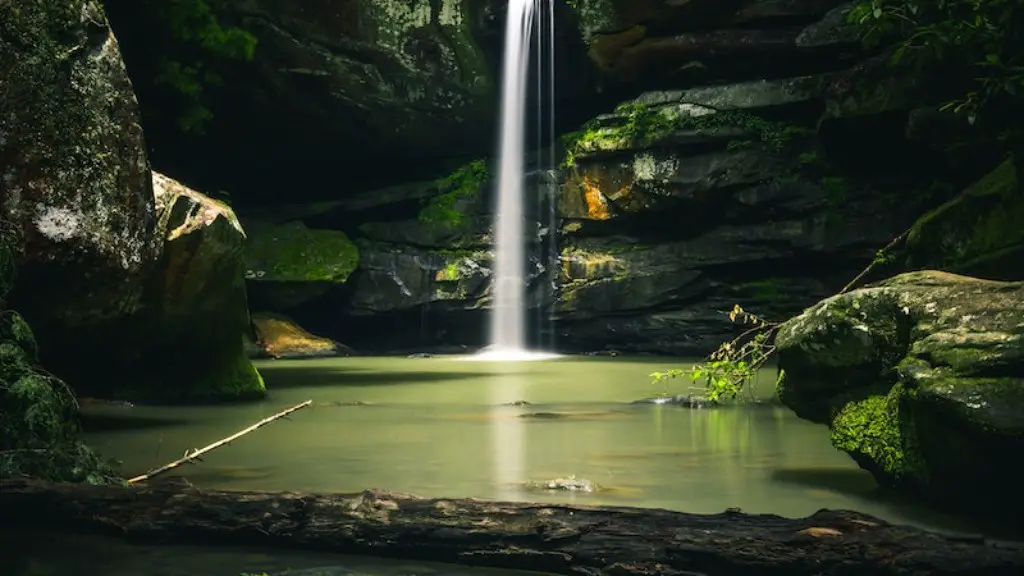Our planet is home to a dizzying array of creatures, many of which are found living in the United States near the Mississippi River. As one of the longest rivers in the world, the Mississippi River is home to a huge variety of animal species. From small mammals to buzzing insects, the Mississippi River provides a stable ecosystem for many creatures.
The great river has a deluge of animals near its borders, particularly near its banks and wetlands. Animal species in and near the river have adapted to the fluctuating water levels and are relatively resilient. These environmental changes leave a smaller yet robust selection of wildlife to reside near the Mississippi River.
Mammals
Birds, reptiles, and fish are common sights along the river’s shorelines, and amongst them are a variety of mammals. Small mammals such as otters, beavers, and muskrats often make their home around the river’s edge, short distances from downtown. Larger animals such as deer, bears, and coyotes may be spotted in more secluded areas.
Rainy conditions tend to attract a higher population of mammals near the Mississippi River. As winter brings colder temperatures, they move into dens or tree burrows to stay sheltered. In the warmer months, they can often be seen playing in the banks and even fishing in the murky waters.
As the large animals are fewer in number (due to hunting and decreasing habitats), there are still a number of species that have adapted to the changing environment. Foxes, bobcats, and raccoons are abundant along the riverbanks, even in the most developed areas.
Birds
Bird species inhabit many areas along the Mississippi River. Larger bird species such as the Great Blue Heron, bald eagles, and Red-tailed Hawks can be seen flying overhead. The more common species, such as Canada geese, Mallard Ducks, and Turkey Vultures, can be spotted in more populated areas as well.
Given the plentiful food source of fishing, birds also feel welcome to reside near the Mississippi. Throughout the year, migratory birds come and go, finding respite in the wetlands along the banks. Various species of songbirds and raptors are drawn to the river’s abundance of prey, making the Mississippi River a paradise to observe nature at its best.
Reptiles
Iguanas, snakes, and frogs all live in and around the Mississippi River. These reptiles are a well-adapted species that have learned to survive in this dynamic environment. The warmer climate has been beneficial to their cold-blooded nature, making the banks of the Mississippi River a perfect retreat.
Frogs are the most common reptile along the river. Every year, the opportunistic amphibians lay their eggs in the river and feed on insects, worms, and tadpoles that live nearby. The barking tree frog is a species native to the Mississippi Valley, and can be seen during the warm months along the shoreline.
Another reptilian inhabitant of the river is the alligator. They dwell near the salty waters of the Gulf of Mexico, yet move further up the Mississippi in search of food, typically at night.
Insects
The banks of the Mississippi River are also home to various insects. In the warmer months, mosquitoes and dragonflies can be seen nearby in great numbers. These pesky summer pests are, however, a necessary part of the local ecosystem.
Cockroaches and other terrestrial creatures can also be seen, feasting off any spilled organic matter or natural debris that the river deposits along its banks. Crabs, millipedes, and other crawling bugs such as bedbugs, ants, and ticks can sporadically be seen scurrying around near the river.
Fish
The most common animal found near the Mississippi River is the fish. Various species of fish such as carp, catfish, bass, and gar make their homes in the river’s many bodies of water. The deeper regions of the Mississippi River serve as a great habitat for many types of fish, and fishing enthusiasts often flock the area to take advantage of the plentiful species.
Every month, local and state agencies monitor water levels and the fish population. This helps ensure that the fish population remains healthy and able to reproduce enough to keep the population intact. By monitoring these levels, wildlife concerns are addressed and overfishing is kept to a minimum.
Bivalves
The Mississippi River is host to a variety of bivalve species. Clam and mussel species such as the Giant floater, Asian clams, and Bluntnose Minnow inhabit the warm and shallow waters of the river and its tributaries. Bivalves can be found in many areas along the Mississippi, from its headwaters in the Great Lakes region, to its entrance into the Gulf of Mexico.
Municipalities use bivalves for monitoring water quality, making them a valuable asset to the ecology of the river and its tributaries. Clean and healthy rivers are essential for the species living there, making these organisms an important piece to the puzzle.
Final Thoughts
The Mississippi River is home to a diverse array of species that have adapted to their changing environment. It’s quite remarkable to see how each species has evolved over time to be able to thrive within the ecosystem of the mighty Mississippi.
No matter what species it is, it should be acknowledged that each one is a part of an interconnected web of complex and fascinating biodiversity. As humans, it’s our responsibility to care for the land and the animals around us, individually and collectively.




